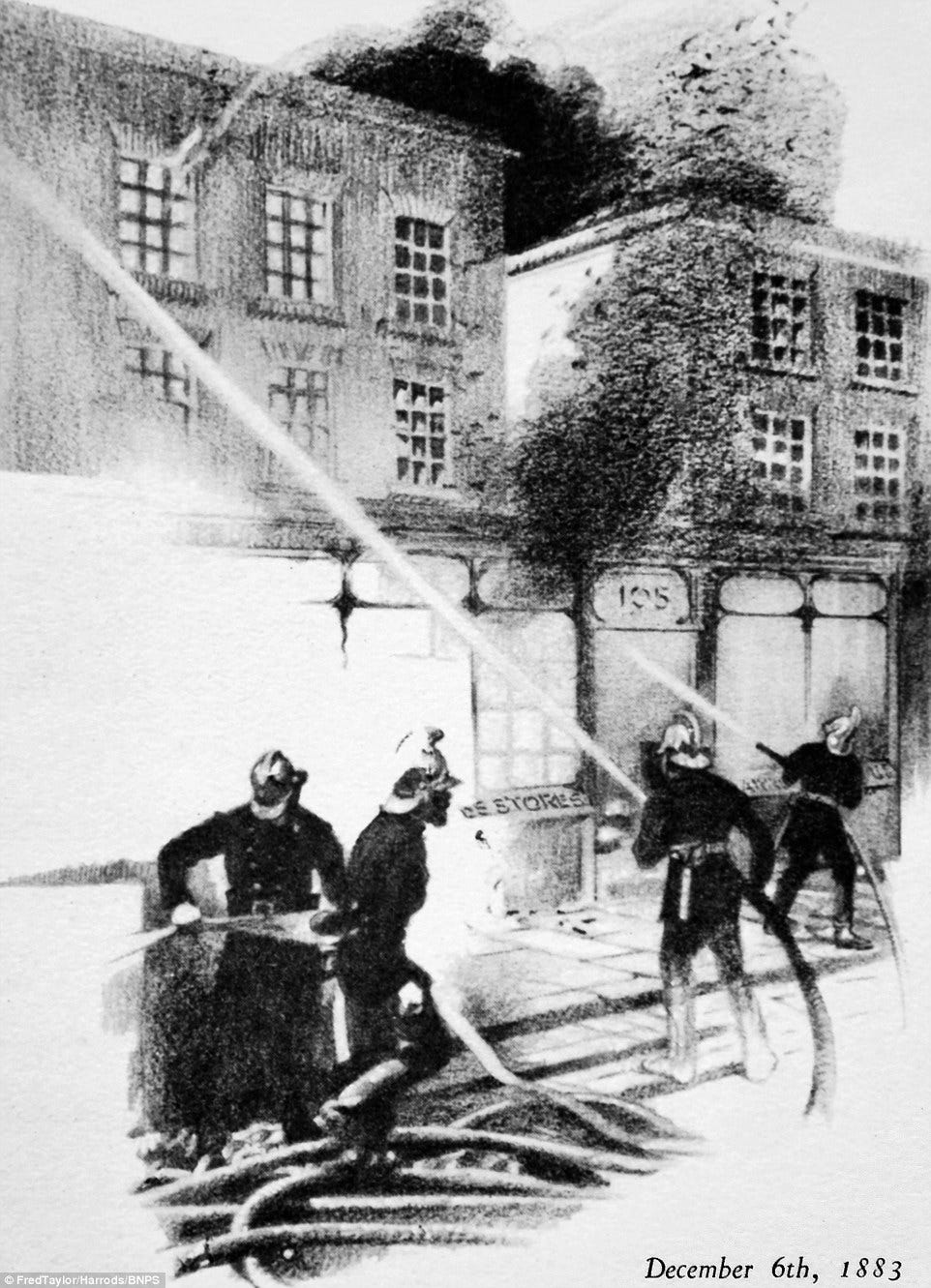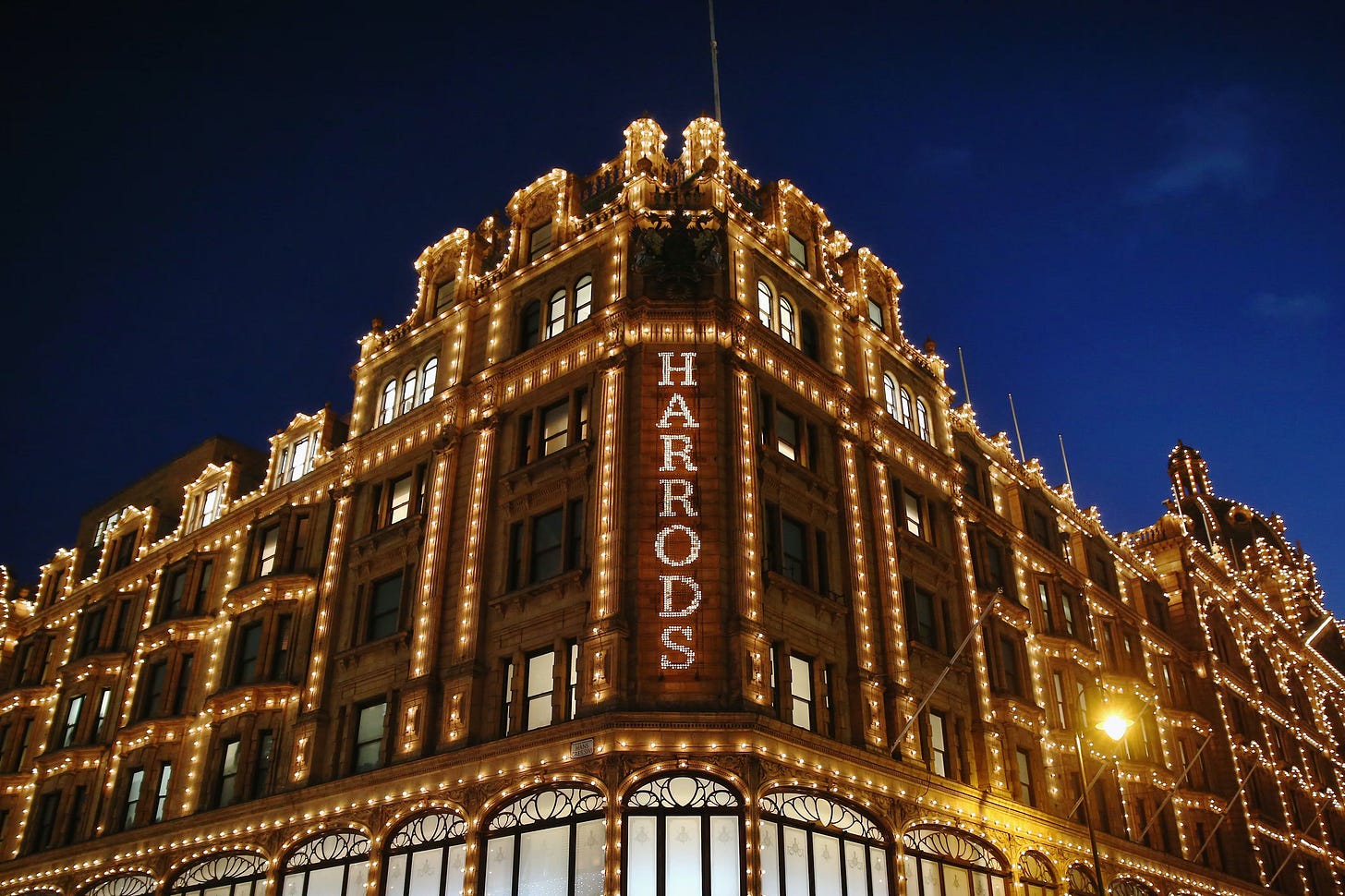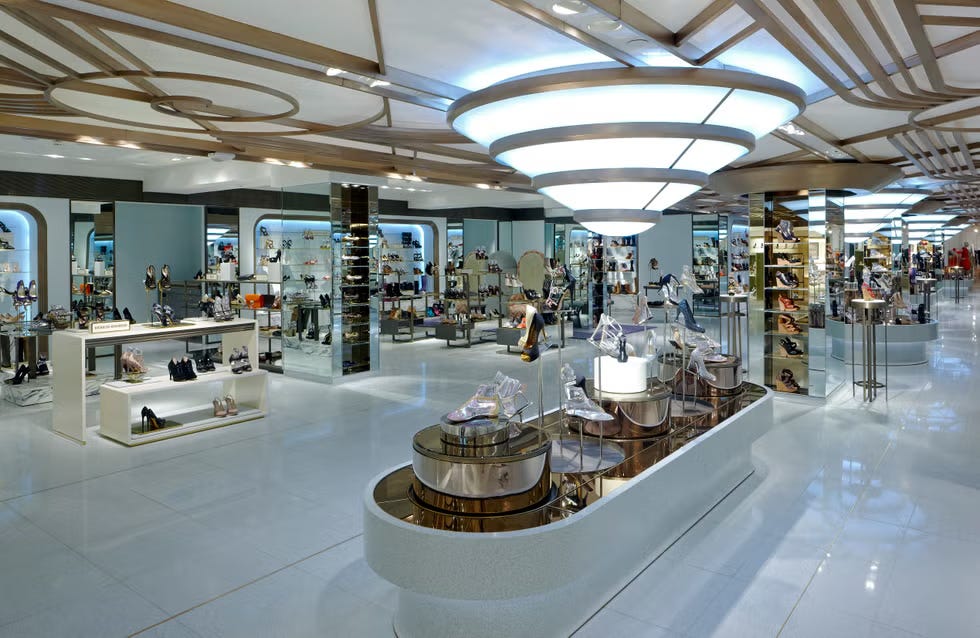The Interesting Story of Harrods
One of England's first department stores has an inspiring past and a bright future
Department stores across America (including those within luxury) might be struggling, but in England we see a completely different story. Harrods welcomes over 15 million visitors annually to their sole location in London and has become a gold standard of how retail should operate and how executives should be thinking about their customers. They’ve managed to overcome a number of near insurmountable hurdles to become the retail powerhouse they are today.
Harrods was founded in 1834 by Charles Henry Harrod. Charles first opened the store to sell tea and groceries with a small staff of four at its original location. Over the years he and his team began selling more and more items, becoming a one stop shop for customers. Something that most people don’t know is that the store almost closed before it grew to even a fraction of what it is today. Two years after its opening, Charles was found guilty of his part in stealing 112 lbs of currants (a small dried fruit very common in England). He was caught and faced a seven year deportation sentence to Australia. In the 1800s Australia was still a penal colony for the British Empire. Due to overcrowding in prisons, they would use this as an alternative for people who committed crimes that were deemed serious but not severe enough for the death penalty. Fortunately for him, a successful petition kept him in the country. He only served one year in jail before a second petition helped to set him free.1 His brother watched over the store as Charles served his time, but had he been in jail longer, or if he had been deported, it’s easy to see how the store would’ve eventually failed.
In 1849 the store moved to its current Knightsbridge location on Brompton Road and almost a decade later was taken over by Charles Digby (Mr. Harrod’s son). One fateful night during the winter of 1883, the nightmare of any brick and mortar owner came to life. A raging fire burned the entire building to the ground. When most people in this scenario would become distraught and give up, Charles pressed on. Yes, they rebuilt the store, but the even more impressive feat they pulled off was fulfilling each and every Christmas order they had received that year. Six years later they went public and began trading on the London Stock Exchange.

Once Harrods reopened, it became a beacon of innovation and continued to be the premiere store at which everyone shopped. They were one of the first stores ever to install an escalator, which they then dubbed “a moving staircase.” The experience was so terrible with its rudimentary technology that customers were given brandy to ease their fears of taking it upstairs.2 The store’s slogan has always been “Omnia Omnibus Ubique” which is latin for “all things for all people, everywhere.” But sometimes when you cater everything to everyone, you make a few questionable decisions. One of the most interesting in this list was their Pet Kingdom. On the top floor of the store, they sold everything from recognizable household pets to exotic animals, including crocodiles, elephants and lions. For obvious reasons they no longer sell these animals, but this department lasted for almost a century.
Over the years they continued to grow rapidly, bringing in more and more products by some of the best clothing brands around the world. They also started adding other services, such as “waiting rooms, fitting rooms, smoking rooms, a post office, a circulating library, a music room, a tourist office, booths to book theatre tickets or train tickets.3” As the store grew, Harrods ownership changed hands more than a few times. They were first acquired by the House of Frasier, a British department store chain, in 1959. Mohamed and Ali Al-Fayed purchased the combined company in 1985, taking the company private again. Almost a decade later, The House of Frasier re-listed on the London Stock Exchange and Harrods was spun off while the Al-Fayed brothers retained control. The company exchanged hands one final time in 2010 and was purchased by Quatar Investment Authority (QIA).
Regardless of its ownership, Harrods remains a crown jewel of England’s retail scene. The store today has 1.1 million square feet of retail space and depending your definition of a department store, it’s the third largest in the world behind Macy’s Herald Square in NYC and the Shinsegae Centum City in Busan, South Korea. Different but consistent iterations of customer experience strategy and having strong relationships with their vendors is what keeps people coming back for more time and time again. Stay tuned for next week’s article where I’ll dive into how Michael Ward (Harrods’ Managing Director for the last 20 years) executes on his vision to make sure each customer feels welcomed.
The Sun; Harrods' Horrible History
The Londonist; 11 Secrets of Harrods
London Museum; Harrods: A Location for Luxury




Great read. I love visiting when I can and I always feel like I’m transporting back in time. I didn’t all of this — so great to learn.
Insightful piece, Nick. Loved reading!